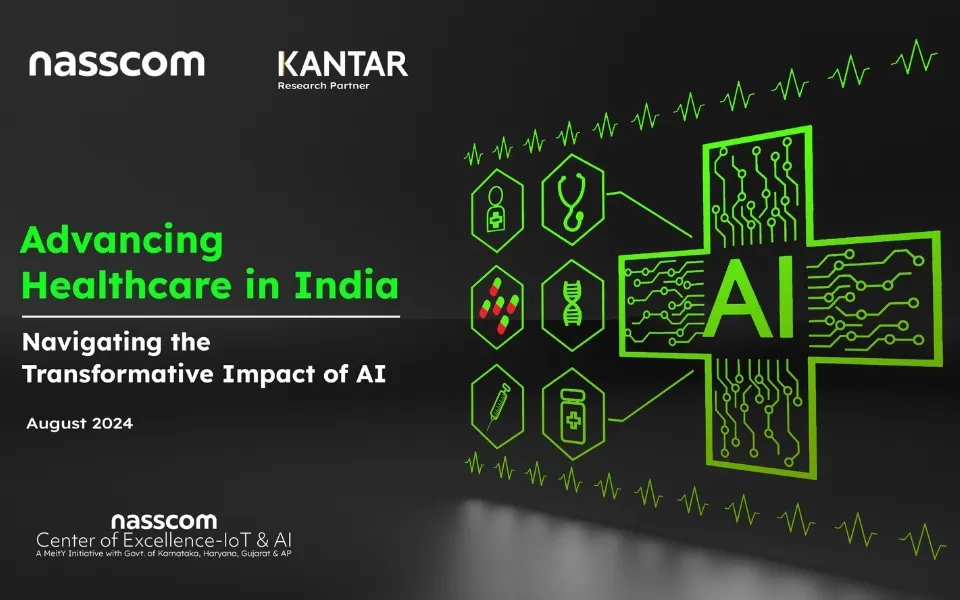Building on the foundational elements of people and technology discussed in the first part of our guide, where we discussed some practical steps for data governance in the healthcare sector, we now turn our attention to the equally crucial components of process and policy in implementing data governance in healthcare. According to an AWS report, Chief Data Officers are increasingly focusing on data governance activities (63% in 2023 vs. 44% in 2022). This growing emphasis underscores the need for meticulously designed processes and robust policies to seamlessly integrate expertise and technology.
While the expertise of individuals and the sophistication of technological tools provide the backbone for data governance, it is the meticulously designed processes and robust policies that ensure these elements work harmoniously.
In this part, we delve into how well-defined processes and comprehensive policies are pivotal in achieving successful data governance, ultimately enhancing patient care, compliance, and organizational efficiency.
Process
At the end of the day, data governance translates into a series of processes that aim to provide the operational models for the utilization, handling, analytics, and insights of and into the data as a core business function of any enterprise. In the HLS, Fintech, and other regulated industries where data/privacy considerations are, in fact, legislated at the federal and state levels, data governance is not only a required corporate governance function but also a legal requirement.
Clearly defined, understood, documented, and followed processes and workflows serve as the cornerstone of an effective, practical, and meaningful data governance program that ensures operational efficiencies and adherence to regulatory requirements while increasing customer confidence.
More often than not, data governance programs tend to be viewed as "inwardly" facing programs within the walls of the enterprise. From my perspective, a well-established and run data governance program and its associated processes are, in fact, a competitive advantage and a great customer confidence booster that can, at a high level, have both a branding as well as external awareness value and should be treated as such.
Well-defined processes and programs are essential for the successful implementation of data governance:
1. Definition
Defining and documenting a consistent understanding of data, its sources, and an enterprise-wide definition and meaning of data and metadata (e.g., taxonomy, ontology, business architecture, etc.) is the starting and vital point for a workable and robust data governance program.
At one of the largest data companies in the world (which did not have an explicit data governance program at the onset), a consistent complaint we received from the C-suite was the inability to get consistent reporting, e.g., financial position reports. The problem was that the CFO would request and receive contradicting reports depending on who provided the information, even though the data came from common systems. We did a deep dive into the origin of the problem. We found out that, due to the lack of a formal data governance program, the core issue was not in the data but in the interpretation and definition of the common data elements by different groups in the same systems and data. This realization and finding engineered the need for executive support and funding to establish a formal and robust data governance program, which we did.
2. Governance Framework
Data governance programs require a framework that begins with people and policies aided by technology and processes. It needs to be a formal process with clearly defined roles and objectives:
• Data Governance Executive Sponsors: These are the C-suite, board-level sponsors of a formal program to provide enterprise awareness, support, and funding, which is essential to drive consistency and adherence to such programs.
• Data Governance Operational Team: These are the operational heads of the business who are in charge of the day-to-day operations of the organization and have a vested interest in accurate reporting, ready availability, and quick response to business needs. Their role is to enable and drive the data governance program at the operational level, where the rubber meets the road.
• Data Governance Steering Committee: This team is a combination of business and technology leaders that drive the formulation, change control, and operations of the data governance program with the different teams, roles, and technologies:
o Working Groups
o Data Stewards
o Master Data Management
o Data Architecture
o Technology Selection
o Change Management
3. Methodology
Establish a methodology for implementing data governance. This may include conducting Proof of Concepts (POCs at the technology and process levels) to test solutions before full-scale deployment and utilizing process workflow analysis to identify bottlenecks and inefficiencies.
Policy
Developing data governance policies for healthcare organizations is essential for maintaining operational value, data security, and compliance. According to the HIPAA Journal, 725 data breaches were reported to the OCR (Office for Civil Rights), and more than 133 million records were exposed or impermissibly disclosed. Internal adherence to policies, including data security protocols, access controls, and data usage guidelines, is crucial for mitigating risks. Let us look at how organizations can make their policies airtight to stay compliant and secure organizational and customer data.
1. Internal compliance awareness
Internal Adherence: Ensure that your organization follows internal policies for data governance, including data security protocols, access controls, and data usage guidelines.
Secure Development: Emphasize secure development practices to mitigate data breaches and cyber threats.
Regulatory Compliance: Stay informed about regulatory requirements like HIPAA and GDPR to ensure adherence to legal standards.
2. Planning and Implementation
Assess Current State: Evaluate your organization's current data governance practices, infrastructure, and policies. Perform a SWOT analysis to create a focused implementation strategy.
Define Objectives and KPIs: Clearly define the objectives of your data governance initiative, such as improving data quality, enhancing patient privacy, or streamlining data access. Establish Key Performance Indicators (KPIs) to measure the success of your implementation efforts.
Design Governance Framework: Develop a comprehensive governance framework that outlines roles, responsibilities, and processes for managing data assets. Define data ownership, stewardship, and accountability mechanisms.
Implementation and Integration: Implement chosen technologies and solutions, ensuring seamless integration with existing systems. Conduct thorough testing and validation to identify and address any issues. Train staff on new processes and tools to ensure adoption and compliance.
3. Monitoring and Continuous Improvement
Monitor Performance: Continuously monitor key metrics and KPIs to gauge the effectiveness of your data governance efforts. Regularly review data quality, security incidents, and compliance status.
Feedback and Adaptation: Collect feedback from stakeholders and users to pinpoint areas needing enhancement. Adapt your data governance strategy based on evolving business needs, technological advancements, and regulatory changes.
Continuous Education: Provide ongoing training and education to keep your team updated on best practices, emerging technologies, and regulatory requirements.
Conclusion
Implementing effective data governance in healthcare is a multifaceted endeavor that requires a blend of well-defined processes, robust policies, advanced technology, and skilled personnel. By focusing on these critical components, healthcare organizations can enhance patient care while ensuring compliance with regulatory requirements. The foundation of successful data governance lies in the meticulous design and implementation of these elements, building a culture of accountability and continuous improvement.

















